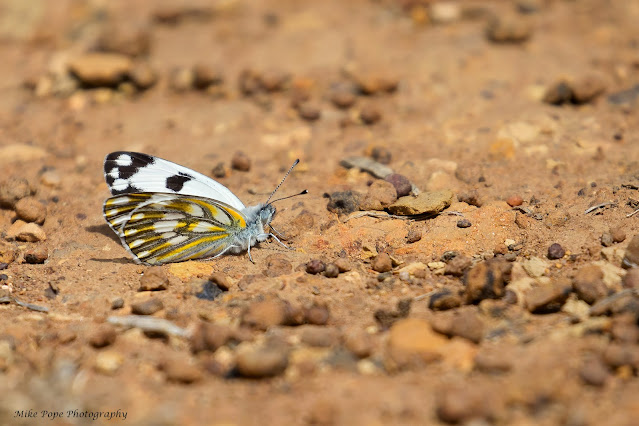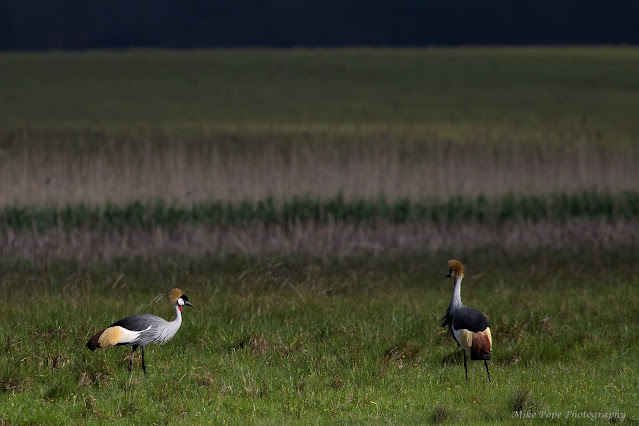12-15 November 2021; Vleiland, Wakkerstroom
I had not been to Wakkerstroom for 25+ years, so it was a pleasure to return for a family weekend in a great farm style house that was also dog-friendly. This visit our two Cattle Dogs would be coming with us for the weekend. It was a 3-hour drive from Midrand with some heavy traffic on the road to Standerton.
Wakkerstroom is the 2nd oldest town in Mpumalanga province and is situated on the Kwazulu-Natal border. The area surrounding the town in mountainous whilst in town there are grasslands and vlei's. The Balele Mountains are to the south and the town itself has a lot of history with the Courthouse, St Marks Church and the Bridge all being declared as national monuments.
Of course, it is also a well-known birding destination especially for Rudd's and Botha's Larks and Yellow-breasted Pipit amongst others in the 3 main biomes; Wetland, Forest and High-altitude Grasslands.
The well-appointed house was situated near the Wakkerstroom vlei where we could take the dogs off-lead and with great vista's across the grasslands. The weather was cold, overcast and gloomy when we arrived late Friday afternoon and was the same when we woke on Saturday morning along with some gusting wind. In the morning we explored the vlei with the dogs. We did have a pair of Grey-crowned Cranes in the fields opposite our house - the Prince and Princess of Wakkerstroom
 |
| Grey-crowned Crane (Balearica regulorum) |
Later in the day, we drove into town for a well-prepared lunch at a dog-friendly restaurant. The weather did clear later in the afternoon, so more walks with the dogs.
 |
| Marley, the young thug |
There were a couple of birds in and around the house including Pied Starlings which were prevalent
 |
| Pied Starling (Lamprotornis bicolor) |
A male Amethyst Sunbird feeding on some tubular flowers
 |
| Amethyst Sunbird (Chalcomitra amethystina) |
A Red-throated Wryneck stopped on the gate post
 |
| Red-throated Wryneck (Jynx ruficollis) |
Whilst Greater-striped Swallows hawked up and down the road, roosting occasionally on the house fence.
 |
| Greater-striped Swallow (Cecropis cucullata) |
As did a Southern Fiscal
 |
| Southern Fiscal (Lanius collaris) |
There weren't many butterflies around, but a Meadow White did pause in the garden
 |
| Meadow White (Pontia helice) |
I had pre-arranged one of the Birdlife credited Guides, Sifiso for a half-day guiding on Sunday morning. We met at the Post Office at 5:30 and immediately headed out of town to a Yellow-breasted Pipit site. In town it was clear and sunny when we met, but driving the sand road through the mountains we hit fog and 5m visibility. It wouldn't have been possible to see anything, so we did a u-turn and drove the 40km to Dirkiesdorp in the hope the the mist/fog would lift and clear. The fog had thinned out a little when we turned off the main road, just before the village. We had two target species here and came across the first, a flock of Southern Bald Ibis feeding amongst a herd of cows. The foggy conditions didnt do their plumage justice - but it was a great sighting
 |
| Southern Bald Ibis (Geronticus calvus) |
We continued searching the grasslands in the gloom and suddenly came across a stunning male White-bellied Bustard feeding in the grasslands, our second target bird. We spent some time with him watching him feed and call before he suddenly flew off. Driving back to the main road, we found another 3 birds - but these were a little more distant.
 |
| White-bellied Bustard (Eupodotis senegalensis) |
We then headed the 40km back to Wakkerstroom to try the Pipit site again - this time it was completely clear with blue skies above. The Pipit was on private and fenced property, but we found two calling and displaying birds some distance away and had decent binocular views. Images were more challenging, so these are all record shots
 |
| Yellow-breasted Pipit (Anthus chloris) |
Then it was another 40km drive to the Botha's Lark site, stopping briefly for a distant Blue Korhaan for another record or birdscape image
 |
| Blue Korhaan (Eupodotis caerulescens) |
The Lark site was near a village, so we parked and walked the short grass habitat on the hillside and it wasn't long before we found a feeding pair. They were never static, but I managed to get a few decent images whilst sitting down to get as low to the ground as possible
 |
| Botha's Lark (Spizocorys fringillaris) |
When I booked Sifiso, I was told that Rudd's had not been seen at the public sites for sometime and so it was today. We walked for a good hour in suitable habitat without luck - but I did get a crappy image of Pink-billed Lark in the heat haze.
 |
| Pink-billed Lark (Spizocorys conirostris) |
Rudd's is in the area, but all on private land. I suggested to Birdlife to reach out to these farmers to see if permission can be given to the Birdlife Guides, if they are guiding Clients - as this is their bread and butter.
We returned to town and drove another 20km for the final two target species. We managed to track down one, the Drakensberg Prinia but dipped on the Blackcap before we ran out of time
 |
| Drakensberg Prinia (Prinia hypoxantha) |
Overall though, it was a successful morning despite missing Rudd's.
Later in the afternoon we watched a local horse derby in the open field next to our house. Seems there is competition between towns on weekends. The riders ride bareback and horses are only allowed to trot as they race a circuit around the boundary of the open field. It was quite entertaining
 |
| Trotting horses of Wakkerstroom |
Lastly, a few landscape images from the patio of the house - views that go on forever
 |
| Vleiland Lanscape |
We had arranged to stay an extra night, so at 3:30 Monday morning we were up and on the road, to all be back home in time for work after a really relaxing and enjoyable weekend in fresh mountain air. The two dogs slept all the way home as they had run themselves ragged over the past 2-days!
































































No comments:
Post a Comment